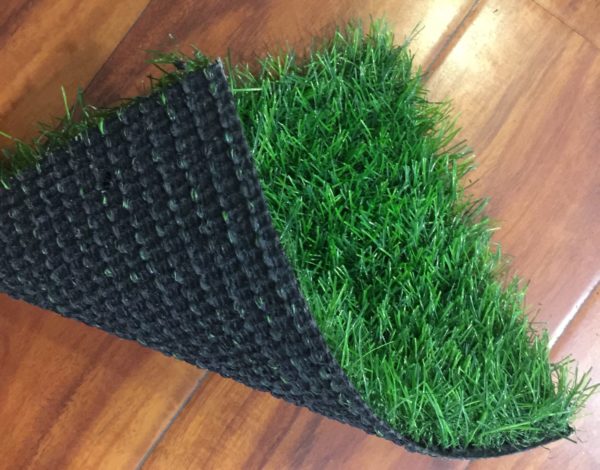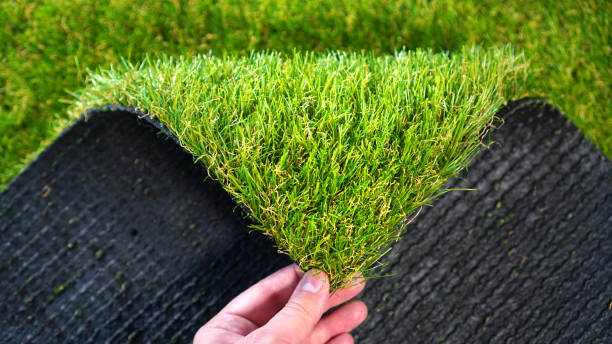There are several benefits to using artificial grass on your lawn. In addition to looking and feeling like real grass, artificial turf reduces water usage and weed growth. So, is artificial GRass right for you? Read on to find out! Despite its softer texture and lower cost, this turf is not as durable as real grass and requires a higher face weight to handle traffic. That being said, it still makes an excellent choice to buy good quality artificial grass.
Artificial GRass is less expensive than real grass
If you’re looking for a beautiful lawn, but don’t want to spend a fortune on it, artificial grass is a great option. It’s incredibly low-maintenance, and you can save a significant amount of money. The best part about artificial grass is that it’s far less expensive than real grass, and you don’t have to worry about weeds growing in it. You can even save more money by installing it yourself, if you’re handy.
The initial cost is much lower with natural grass, but it’s not as cheap as you might think. After all, it’s likely to need regular maintenance, which can add up over time. Ultimately, however, it will pay for itself over time. This means that even if it’s more expensive to install artificial grass than real grass, the money you’ll save will pay for itself in no time.
If you have pets, artificial grass is even cheaper. Most synthetic grasses last up to eight years. A high-quality product can last up to fifteen years. If you spend $984 on a turf every year, that means you’ll save nearly $45,000 over the life of the grass. That’s a huge difference! Not to mention that artificial grass is less expensive than real grass in the long run.
Depending on your location and the type of grass you choose, installing artificial grass can cost as little as $2 to $8 per square foot. You may need to purchase multiple rolls, but this is still significantly less expensive than installing real grass. You’ll need to pay around $28 to $8 per square foot for a 1,000-square-foot lawn if you don’t care for it properly. You should also remember that you’ll need to pay for weed barrier fabric as well as the installation.
It reduces water usage
Compared to natural grass, synthetic turf needs no watering, which dramatically lowers water use. A typical Californian family uses eighty-five gallons of water per day, and the average summer usage is nearly double that amount. Even more remarkable is that water usage is only half that much during the winter. The following are some compelling reasons to switch from natural grass to artificial grass:
Natural grass lawns are the biggest source of water used in residential landscaping. While native plants require much less water than tropical plants, they still require frequent watering. Artificial grass, on the other hand, requires no watering, meaning that water-conservation benefits are substantial. Furthermore, water conservation is important in California, where many people are suffering from drought conditions. With the increased costs of water, it is no wonder that people are seeking out ways to reduce their water usage.
A recent study revealed that replacing a lawn with artificial turf could save more than five5,000 gallons of water annually. Using synthetic turf could save up to a hundred thousand gallons of water over a 20-year lifespan. With that kind of investment, artificial grass will reduce water bills and help save the environment. But how does artificial grass actually help you reduce water usage? Well, the answer lies in the type of synthetic grass you choose.

The first benefit of artificial grass is its environmental benefits. The DWP is working on a new strategy for water conservation that will address wastewater and stormwater management. Its aim is to encourage people to change their outdoor landscaping and switch to drought-tolerant plants. Artificial grass has some other advantages, too. For example, it saves on water, because it doesn’t accumulate like natural grass. And unlike natural grass, it doesn’t pollute the water like a healthy piece of soil.
It looks like real grass
If you have ever seen a lawn covered with fake grass, you know how difficult it can be to tell the difference. Even if you spend a lot of time mowing and fertilizing your lawn, you can still notice that the fake grass doesn’t have the same lush appearance as real grass. This is because the color of real grass varies according to the season, the amount of irrigation, and the number of hours it takes to maintain it. Artificial grass, however, is a great option for a quick and affordable way to green up your lawn.
Artificial grass not only looks like real grass, but also reacts like it. While it doesn’t feel like real grass to the touch, it’s hard to tell the difference while walking on it. The blades of artificial grass are manufactured to have a uniform height, giving the appearance of varying growth stages. Moreover, fillers are used to keep the blades upright and give the impression of walking on real soil.
When installing artificial grass, be sure to select a quality brand. Look for a product that is made from polyurethane and doesn’t contain any latex. Also, look for a product that has a UV-protectant coating, which will prevent the grass from fading when exposed to the sun. Without this layer, your artificial grass will become blue and white over time. It is also possible to install artificial grass between pavers in a walkway.
It reduces weeds
If you have an artificial lawn, you might be wondering how you can reduce the amount of weeds that grow in it. Thankfully, there are some simple ways to keep weeds at bay. One way is to boil water, which will kill weeds without harming the grass. This is a safe and effective way to eliminate weeds without damaging your lawn. Alternatively, you can also spray your lawn with a weed killer solution.
An artificial lawn can reduce the amount of weeds in your yard by nearly 99%. This is mainly because the seeds of weeds aren’t spread from soil to air. These seeds can be spread through clothing or even on pets and animals. This way, the artificial lawn can reduce weeds, so it can be a great option for many people. It can also be a great option for areas that get high traffic and are prone to weeds.

When installing artificial grass, it’s best to deal with weeds during the installation process. A professional installation process will remove approximately four to six inches of soil and organic matter before installing the artificial grass. This prevents the growth of invasive weeds and vegetation. During this process, you can also choose to have a weed barrier installed between the artificial grass and the base to minimize weed growth. You should also be aware that this process will require some work, so it’s important to do your homework before installation.
Another way to minimize the number of weeds in your yard is to get rid of your natural sod grass. While removing weeds on natural sod grass is possible, it is not easy to get rid of them completely. Weeds tend to grow from the surface, and that means it is difficult to eradicate them entirely. By choosing an artificial lawn, you can reduce the number of weeds that appear on your yard.
It reduces biodiversity
Many people don’t realize the impact of synthetic grass on biodiversity. Artificial grass is a major contributor to water pollution. Its excessive production contributes to algae blooms in streams and drainage systems. This churns up waterways and reduces the oxygen level in the water. This has serious implications for aquatic life and wildlife. But artificial grass isn’t the only problem associate with it. Here are some examples of the problems cause by artificial grass.

As a synthetic material, artificial grass releases microplastics into local waterways and soil. These tiny particles can be mistaken by animals as food and get move up the food chain, affecting local biodiversity. And because artificial grass is not biodegradable, it pollutes the environment and wildlife. The adverse effects on biodiversity include the loss of natural habitat for wildlife, migration of synthetic materials, and contaminated runoff that contaminates streams, lakes, and wetlands. These contaminants can affect the lives of plants, animals, and humans.
Synthetic grass is widely used in the UK and other cities, and it has become more popular than ever. Many local authorities buy fake grass in bulk. Even suburban family homes are making use of them. One company, Nam grass, has been operating in the UK for six years. However, the increase demand has left European-made fake grass undercut by cheaper imports from Asia. This is bad news for biodiversity and local economies. The rise of synthetic grass is a result of a cultural desire for more green space.
Studies from the University of Western Sydney have shown that synthetic grass and bare soil have the same water requirements when grown in similar conditions. However, the amount of water use by synthetic turf can be increase by the addition of organic infill. The source of these fibres also has to be considered. Ultimately, they should not reduce biodiversity or water resources. In addition, they shouldn’t attract insects and other pests, as these materials are too porous for insects to thrive.






















![To Increase YouTube Subscribers Must Use These Service Provider [New]](https://businessleed.com/wp-content/uploads/2022/11/To-Increase-YouTube-Subscribers-Must-Use-These-Service-Provider-New-360x180.jpg)















